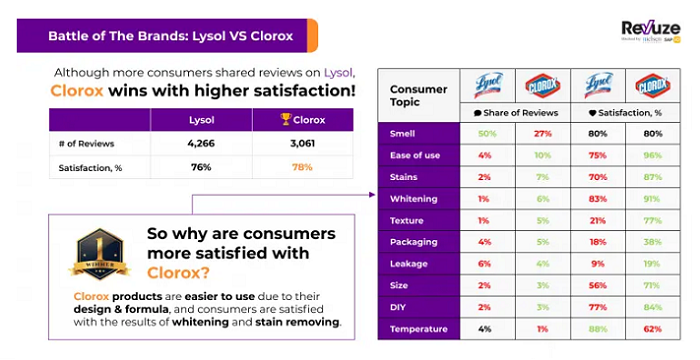What is product innovation and why is it so important for brands?
Published on December 27, 2019 – 5-minute reading
This figure shows how crowded and competitive today’s market really is, and also how aggressive one must be to succeed in it. Yet, being aggressive is not really the single, main secret for success in this case; product innovation, instead, is probably a more accurate keyword for those who want their product to be among the successful 5%.
If your product or solution is innovative, you’ve got a much higher chance to survive and thrive. In this article, we’ll explore the definition of product innovation, how we can see and identify innovation, and how we can measure it. But what is product innovation? And how can it be done smartly? Let’s find out.
Product innovation definition
First and foremost, the definition: Product innovation represents a new way of solving a problem a high number of consumers have. There may be no products at all on the market that address the issue, or there may be other products already on the market that address it in a different way.
In order to consider your product or solution innovative, you must be able to answer yes to all of the following three questions:
- Is the product relevant for a significant number of consumers (whether you’re looking into a mainstream or niche market)? This applies especially to products that address issues that have not been addressed before.
- Is the product better than its competitors? If so, what’s the improvement – design, technology, usability, etc?
- Is the innovation or uniqueness of the product obvious? Is it easy to explain to consumers why this product is necessary or better than its predecessors and competitors? While the answer may not always be an easy yes, this point is really important for the marketing experts who will help you with the product launch.
It takes a village to develop and launch an innovative product/service in today’s market – from the engineers to the manufacturing experts, from the marketing consultants to the legal experts, you’ll need everyone’s help to make sure you’re part of the 5%.
Why is product innovation important?
Product innovation is important because it can help you create new spaces in a seemingly crowded market. By identifying the gaps and imposing yourself into a new space, you can find an audience and satisfy consumer needs in a way that is new and refreshing.
It’s also important to note that product innovation doesn’t always involve the creation of a completely new product that addresses a completely new issue. For sure, when the first iPhone was launched, it established a previously non-existing market and satisfying needs that consumers didn’t even know they had. Same with Kindle: Not only had the first model succeeded (launched in 2007, it sold out in less than 6 hours); but Amazon managed to re-invent it with new models, for instance, introducing the touch-screen.
Innovation may happen when you improve an existing product or you add a new feature to an existing product. When phones got cameras, they gained a new feature; or when Apple dramatically improved the quality of iPhone cameras in the iPhone 11 Pro, that was an innovative move.
Of course, when we talk about innovation, we don’t refer only to products, but also to services, processes, or business models. Those are a little less obvious, but they can be just hugely lucrative and successful. Airbnb, Uber, and Netflix are examples of huge innovations.
How to measure innovation?
There are several metrics you can use to measure innovation; some are more straightforward than others. Commonly, businesses use sales and Return On Investment (ROI) metrics to measure the success of a new product. However, those metrics apply only when the new product has already been launched.
So how can you measure innovation prior to the product launch, for instance, when you are still developing the product or you have a prototype ready? How can you be sure there is an audience for your new solution? And how can you prepare for a smooth product launch?
Market research is the top answer to that question. Gaining a clear understanding of the market, the consumers, and your competition will grant you an enormous advantage when it comes to a product launch.
Identifying gaps in your category and Blue Oceans in the market
What’s a Blue Ocean?
The term « Blue Ocean » was introduced into the discourse by two professors named W. Chan Kim and Renée Mauborgne in their book entitled « Blue Ocean Strategy: How to Create Uncontested Market Space and Make the Competition Irrelevant ». They define blue oceans as unexplored market spaces associated with high potential profits.
A popular example of a Blue Ocean was the legal music download market before iTunes was launched by Apple in 2001. Prior to the launch, millions of people were illegally downloading music from the internet; iTunes allowed consumers to digitally purchase the music, an option that didn’t exist before.
Similarly, Pandora was the first freemium music streaming service as we know Spotify, Tidal, and Apple Music to be today; its creators identified a Blue Ocean in the market and launched it in 2005.
Not everyone can identify a blue ocean, and these types of opportunities do not arise on a daily basis. That’s why innovators also keep their eyes open for gaps in specific sectors of the market; gaps are opportunities, small voids in an existing or seemingly filled market. Gaps are often specific « Services » that established businesses do not offer yet. You can therefore emulate the existing business model and add the new service.
How to make innovative products
How to make innovative products, the one billion dollar question. The easy answer is: listen to the voice of your customers, understand them, and use their knowledge to anticipate where the market is heading.
Revuze Explorer is our solution to create innovative products. But why should you believe our word for it? Here is an example of how we use it to help companies make innovative products:

Data-driven market research
So, how can you get all the data you may need to understand the market and identify potential gaps or even Blue Oceans?
Mostly, you can do that by monitoring the market and listening to the « Voice of the Customer » (VoC), learning what consumers are saying about existing products. Data-driven market research, in the form of Sentiment Analysis and Social Listening, can help you get into the minds of your potential customers and respond to their needs.
People talk, they write reviews, they share their thoughts on social media. What they say about the market and about the products they use can be extremely valuable, especially if you’re hoping to launch a new product into the market.
There are many market research firms out there; however, most of them do their job manually – that’s costly and slow and it doesn’t always help you understand the market you’re interested in.
Companies like Revuze, instead, source Customer Experience (CX) Insights automatically, adapting to the specific language and jargon of each industry and giving you in-depth CX analytics about customers and competitors in a very short amount of time.
Our New Product Launch market research solution helps you prepare your product launch, prioritize MVP (Minimum Viable Product) product capabilities; respond early to issues as soon as they emerge; and minimize the gaps between your new product, the consumer’s wish list, and your competitors.
Author of the article
Alon Ghelber
Product Marketing Officer, Revuze | Author, Customer Experience Magazine (CXM) | Israel
Related services – Executive Programs and Training
- Product Development and Management – How to develop the successful product: From dream to reality.
- MODULE 03 – Planning & Roadmap: How to communicate a high-level vision of your product and service offering.
- MODULE 04 – Market & Competition: How to identify trends, innovation potential, risks and opportunities.
- MODULE 05 – Innovation & Technology: How to build and lead a culture of innovation to innovate better, faster and bolder.
- MODULE 07 – Financing & Investment: How to ensure your investment addresses market opportunities and customer needs.
- MODULE 08 – Prototyping & Industrialisation: How to prototype, test and produce to meet customer expectations.
Categories
Tags
Product Manager
Subscribe to our blog
Do you want to better understand the world around you and adapt to its constant changes?


